How to Keep Up with ESG Expectations of Consumers


Key Takeaways:
The bar for ESG is rising quickly, especially among younger consumers who are reshaping expectations across industries.
Having an initiative in place no longer cuts it. Today’s audiences look for depth, comprehensiveness, and real impact.
If you’re struggling to keep pace, you’re not alone.
In this guide, you’ll learn how to keep up with today’s standards, without overwhelming your team or losing focus.
Consumer expectations around ESG are evolving rapidly.
According to PwC’s 2021 survey on ESG, the number of consumers who deeply care about companies’ ESG practices has increased significantly since COVID-19.
Their expectations have grown, too.
Today, they’re no longer satisfied with companies simply following ESG practices. Instead, they expect companies to actively shape them.
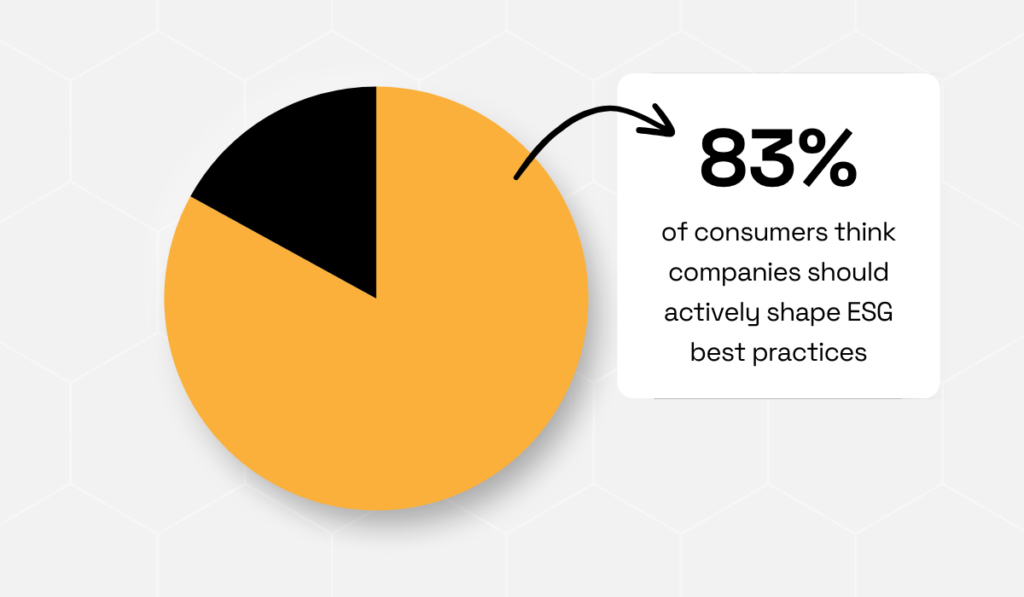
Illustration: Veridion / Data: PwC
ESG priorities are changing as well, for both customers and organizations.
According to Deloitte, in the early days of ESG, most companies were focused solely on reducing their environmental impact.
This is now slowly shifting in favor of the two other aspects of ESG: governance and social.
S-RM’s ESG Report 2024 found that, in the next five years, companies will allocate a greater share of their budgets to these ESG dimensions. The environmental share, on the other hand, will shrink proportionally.
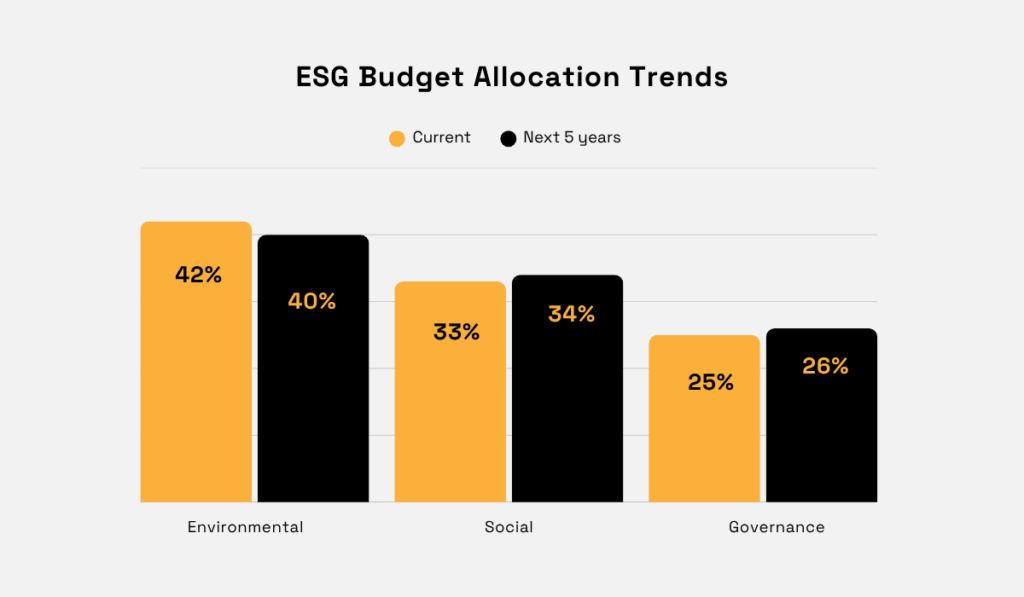
Illustration: Veridion / Data: S-RM
Procurement must stay on top of these trends.
This will help teams not just better align strategy with desired outcomes, but also avoid negative consequences, like reputational damage.
Take Boohoo, for example.
In 2020, this once multi-billion-dollar fast-fashion retailer faced a scandal over “allegations of poor working practices,” including below minimum wage and unsafe working conditions.
The company’s market cap consequently plummeted by an incredible ~$1.9 billion in just two days.
Its practices, meanwhile, remain under public scrutiny to this day. At the end of 2024, for example, numerous publications reported on the brand re-hiring suppliers it had previously disengaged after the scandal.
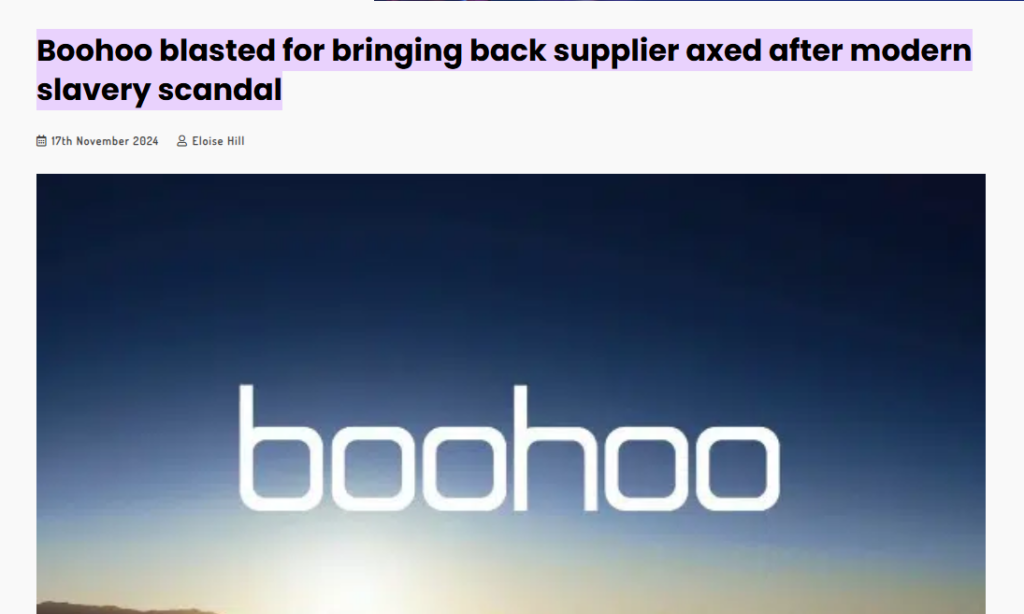
Source: Retail Gazette
It’s an extreme example, sure.
But it perfectly illustrates how what was once business-as-usual is now reputationally untenable.
It also shows that procurement teams must stay on top of changing trends and expectations, and adjust their strategies accordingly.
How should you do that, you ask?
Well, you can track ESG trends through dedicated reports, industry news, and consumer behavior data.
For instance, trusted reports on public sentiment, like Edelman’s annual Trust Barometer, can help you uncover emerging themes in real time.
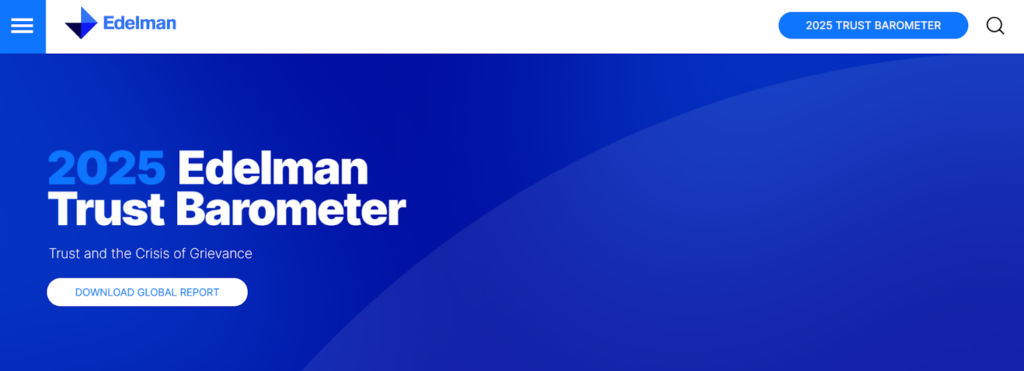
Source: Edelman
You can also stay on top by collecting your own data.
For example, you can commission a market research firm to survey a specific target audience.
A more budget-friendly alternative is setting up web alerts, like Google Alerts, for specific topics you want to track. These can include sustainability, ESG consumer preferences, and so on.
Regardless of how you collect it, make sure you share information internally.
Quarterly “ESG pulse checks” could be helpful.
Long gone are the days of getting ESG self-reports from suppliers and calling it a day.
With growing consumer expectations and stricter regulations, procurement can no longer afford to take supplier ESG claims at face value.
We can once again turn to Boohoo for a cautionary tale.
After the aforementioned scandal, the company underwent an investigation.
Its findings? Apparently, Boohoo didn’t directly encourage or allow poor working practices—but it also didn’t establish or maintain proper oversight.
For instance, it employed just one compliance officer for 500 suppliers and subcontractors in the region at the center of the allegations.

Source: Irish Examiner
As they say, ignorance of the law is no excuse.
Well, the same is true for supplier practices.
Just because you don’t have proper visibility doesn’t mean you won’t be held responsible for supplier misconduct.
Validating supplier practices is especially important for public-facing claims, which must be grounded in verified data.
Just consider that 60% of consumers are already skeptical about “green claims” from brands.
Discovering that they are truly unfounded could severely harm not just your reputation but survivability, too.
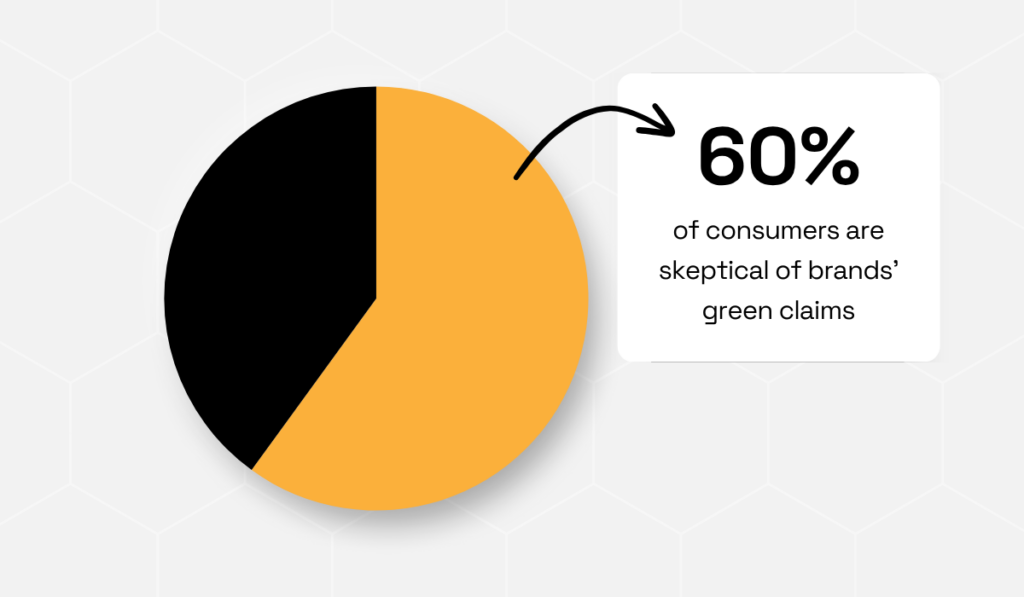
Illustration: Veridion / Data: YouGov
Today, there’s no shortage of validation methods you can use.
Supplier audits, third-party verifications, and real-time monitoring should all be a part of your strategy.
But the main prerequisite is getting ESG supplier data from an unbiased source in the first place.
Veridion, for example, is an independent data provider collecting ESG data for over 100M global companies.
It collects data from various sources, from company websites to local news publications, and updates it weekly for completeness and credibility.
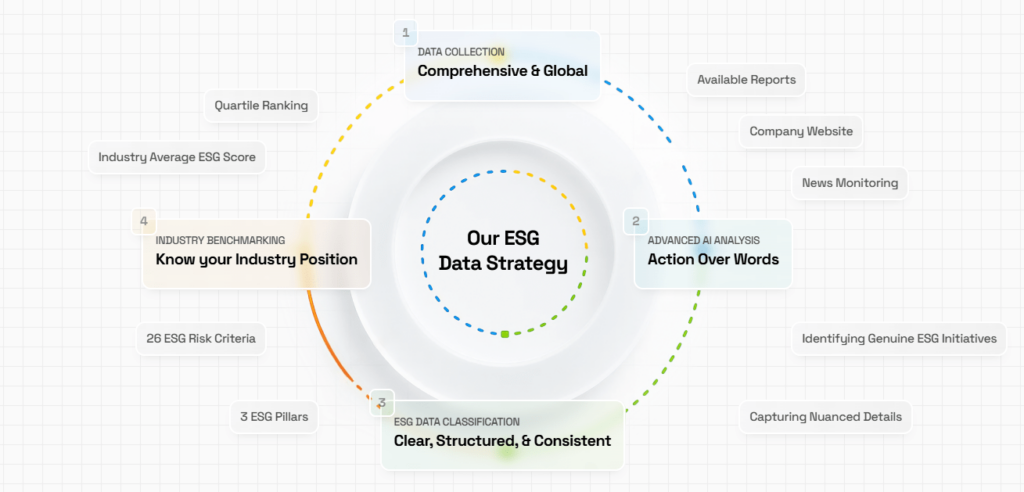
Source: Veridion
But Veridion also takes things a step further.
It assigns each company an ESG score, making it easy for procurement to compare and validate supplier practices at a glance.
The scores are assigned based on a granular analysis of 26 risk criteria across all three ESG pillars, ensuring you don’t risk overlooking anything.
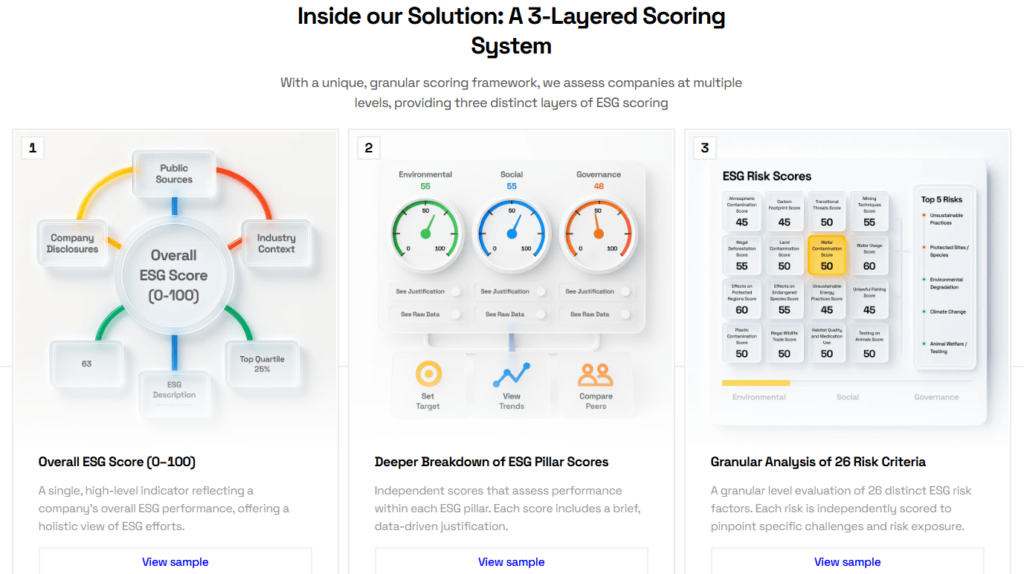
Source: Veridion
Platforms like Veridion are essential for quickly vetting product claims and ensuring they align with consumer expectations.
They can also minimize internal heavy lifting during audits and make it easier to prepare your own reports, whether internal or external.
For teams managing mid-sized to large supply chains, they’re pretty much non-negotiable.
Modern consumers care about details.
They don’t want to see sustainability labels slapped on products with no further information.
Instead, they want to know exactly where products come from and how they’re made.
For example, in NielsenIQ’s 2022 survey on transparency in the food industry, 64% of consumers said they would switch to a brand that provided more in-depth product information than what’s on the label.
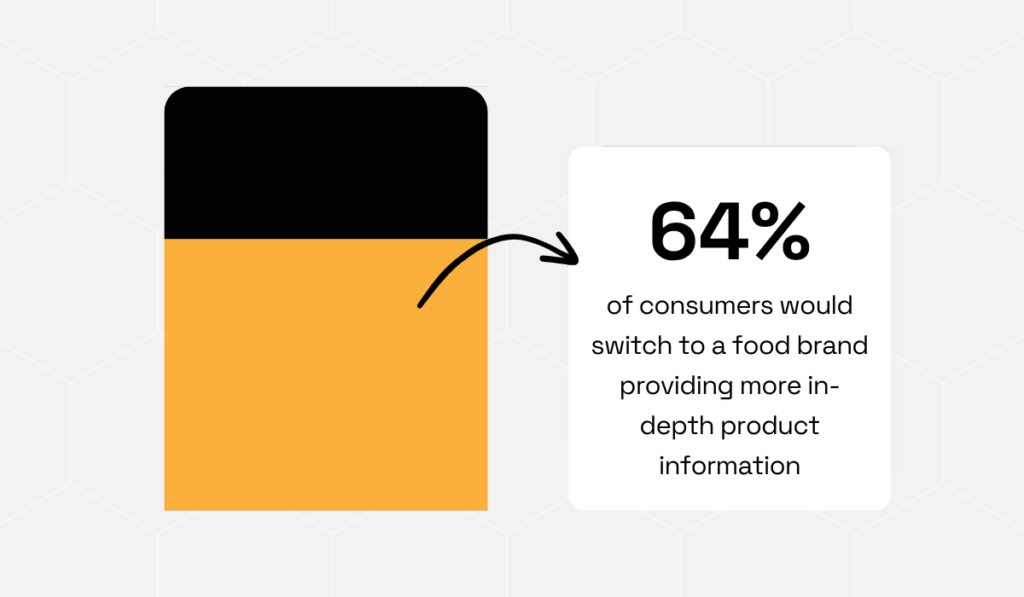
Illustration: Veridion / Data: NielsenIQ
So, consumers increasingly demand comprehensive, accurate, and verifiable sustainability information.
One likely reason is that anything less is often seen as greenwashing.
In fact, according to KPMG’s study in the UK, 76% of consumers consider false or misleading sustainability claims the most obvious example of this highly criticized practice.
And this is something consumers rarely forgive and forget.
Notably, over 50% of surveyed consumers said they would boycott companies engaging in greenwashing.
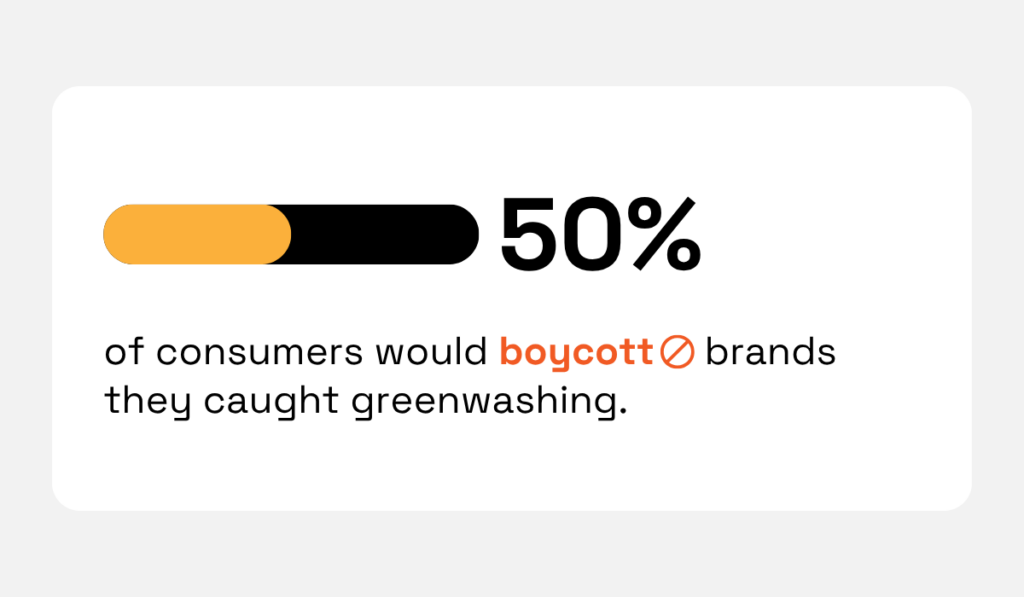
Illustration: Veridion / Data: KPMG UK
So, again, making vague, unverifiable statements can very much backfire.
Traceability is, thus, becoming increasingly important.
Procurement leaders need to build supply chains with visibility down to the tier 2 and 3 levels, ensuring their claims can be backed up.
Brands like Patagonia can teach us how it’s done.
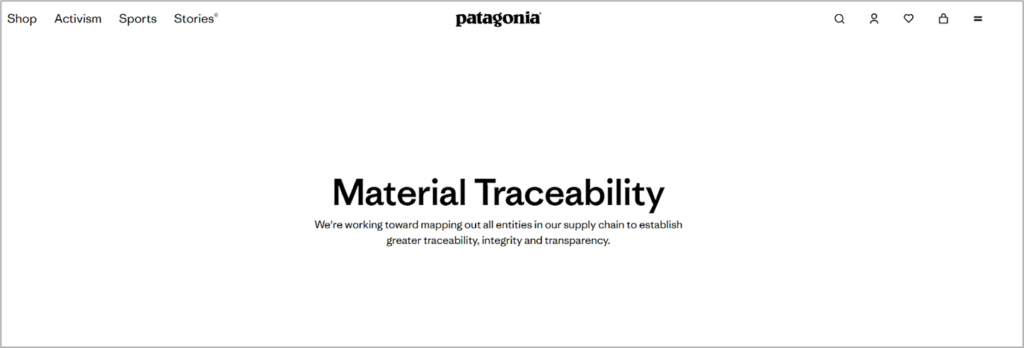
Source: Patagonia
As mentioned on the company website, Patagonia is mapping out its entire supply chain and obtaining reputable third-party certifications from key suppliers. When certifications are not available, the company employs SME auditors to conduct on-site visits.
Additionally, the company also mentions currently researching traceability service providers.
You can use these same tactics to improve the visibility and transparency across your own supply chain.
The best place to start, though, is by adopting a digital dashboard specifically built for supply chain visibility. Solutions like SAP’s Integrated Business Planning, GoComet, or Project44 are all great choices.
With trustworthy ESG data in hand and clear visibility over your supply chain, you can start measuring your progress publicly.
And you should do it because, as mentioned, consumers want verifiable claims.
Committing to and showing off measurable progress can also be more impactful than simply announcing your plans to reach an ESG goal.
Tracking your progress toward it is what truly sets you apart.
Take Microsoft, for example.
In 2020, the company announced an ambitious ESG goal: to become carbon-negative by 2030.
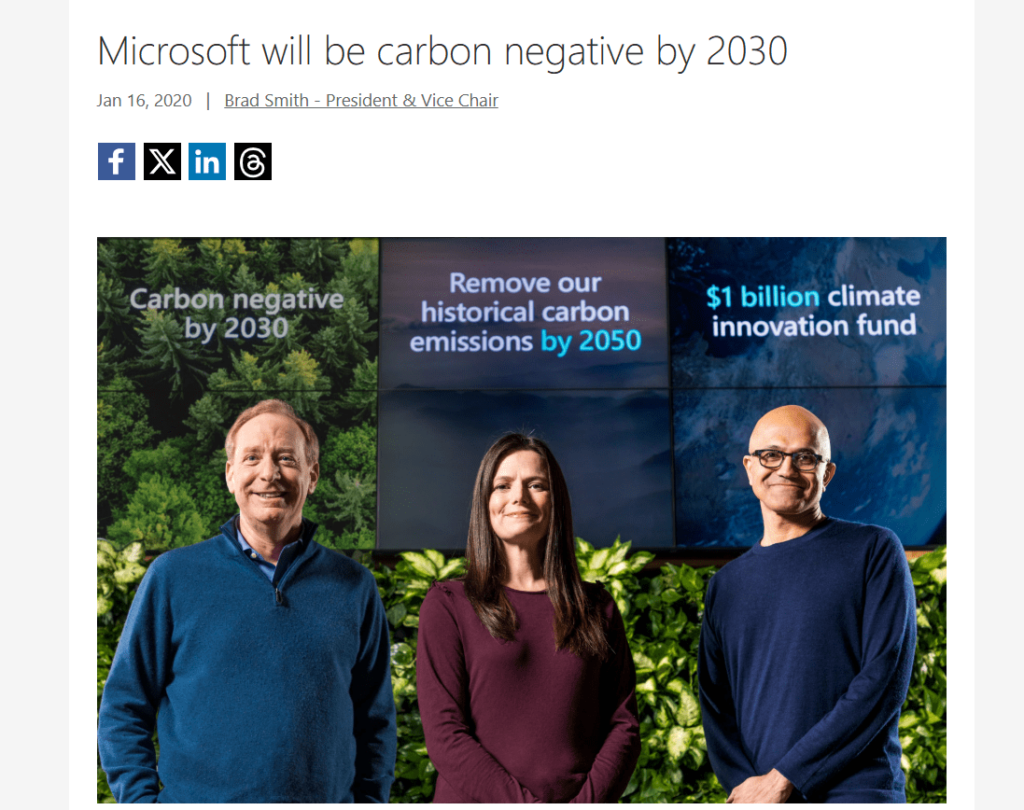
Source: Microsoft
Fortunately, the company didn’t leave it at that.
It kept the public up-to-date by publishing annual sustainability reports and progress updates over the years.
In its latest report, published in May 2025, it boasted several major milestones, like exceeding its target for reuse and recycling rate for servers and components.
However, when it comes to its most publicized goal, Microsoft openly admitted setbacks.
Not only did the company fail to reach its carbon reduction targets, but its emissions actually increased by 23.4% compared to the 2020 baseline.
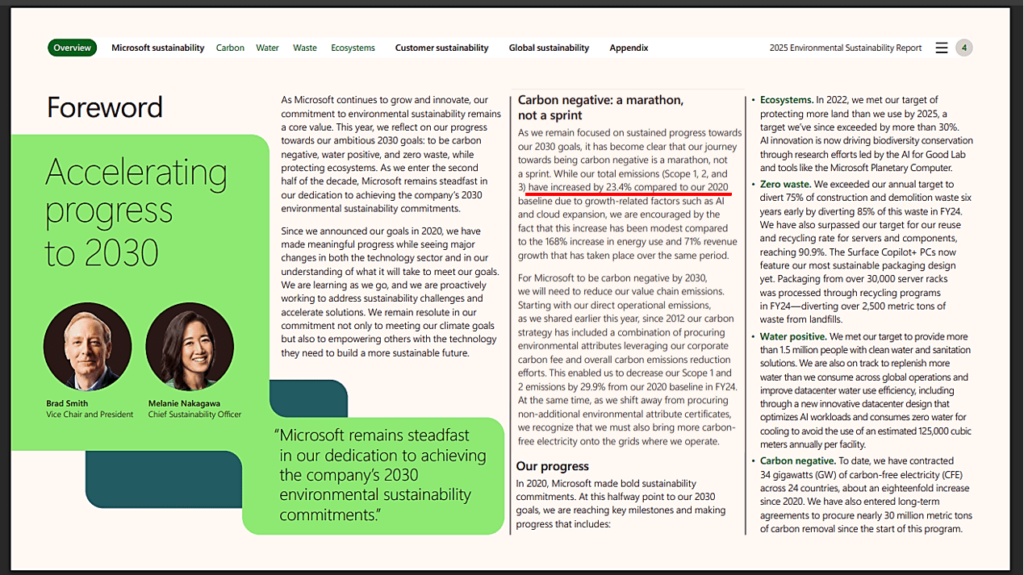
Source: Microsoft
Is this great news? Not really.
But is it honest? Absolutely.
It’s also a masterclass in PR.
As Microsoft probably learned first-hand, publicly sharing your sustainability progress is not always pleasant. But it’s essential in building long-term customer trust.
Matija Zulj, CEO & Founder of enterprise agriculture software company AGRIVI, agrees that to earn trust, companies need to “walk the talk.”
That entails publicly sharing the numbers and, what’s more, making it easy for customers to access them.
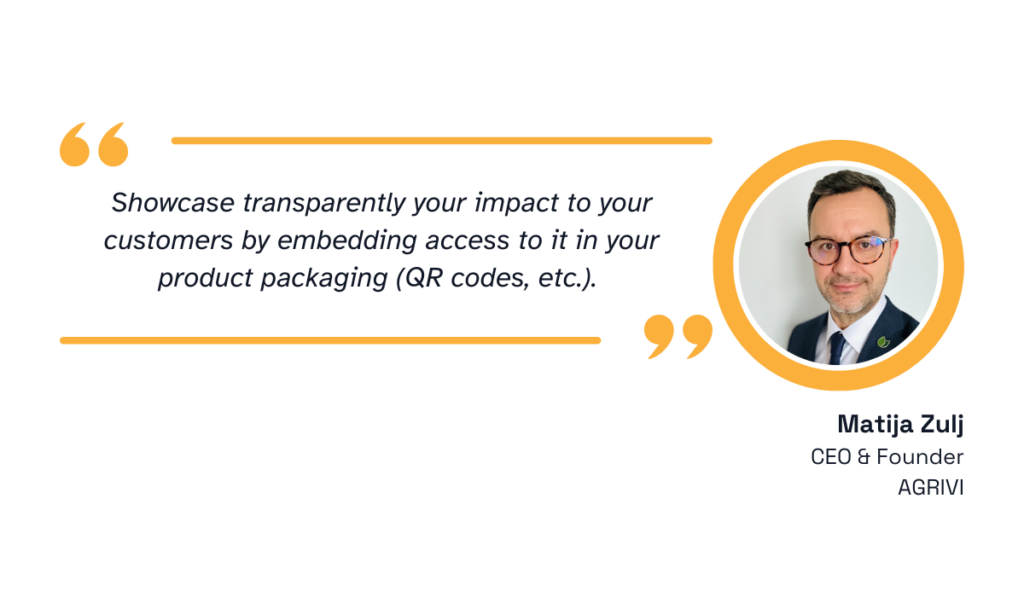
Illustration: Veridion / Quote: LinkedIn
Procurement has a key role in this.
It should help define and track ESG metrics such as supplier emissions, ethical audit scores, or packaging footprint.
It should also facilitate sharing progress transparently for marketing and PR teams.
For instance, procurement should be the one preparing key internal reports. At the very least, it should also sign off on external ones.
Attention to social and governance dimensions of ESG may be growing, but environmental concerns remain central to consumer expectations for brands.
According to Kantar’s Sustainability Sector Index 2025, as many as 64% believe that corporations and companies should take responsibility for solving climate and environmental issues.
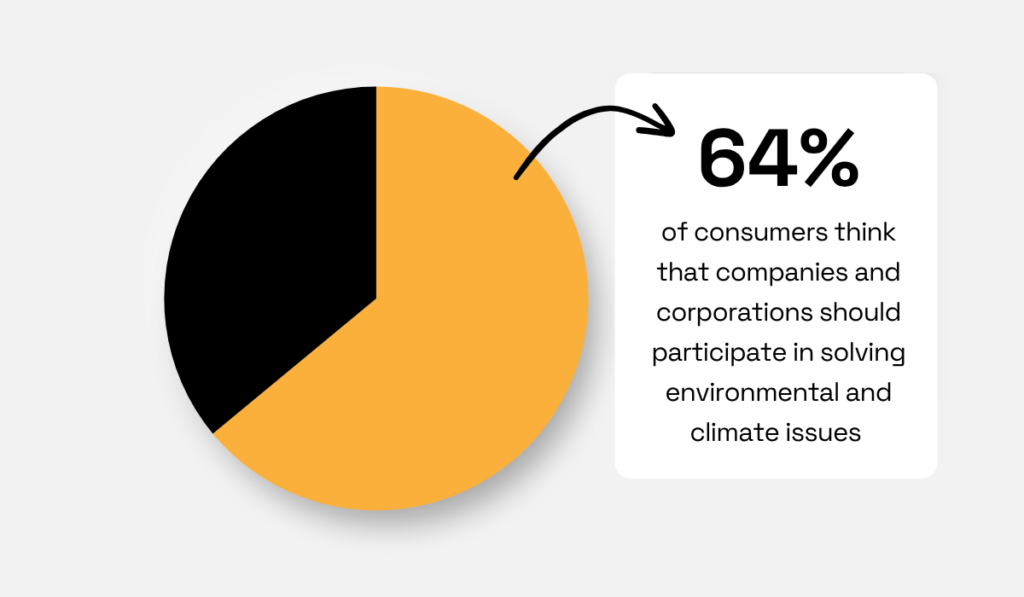
Illustration: Veridion / Data: Kantar
Emissions are at the heart of this responsibility, and not just Scope 1 or Scope 2.
Supplier-related emissions are now in focus as well, and for good reason.
According to CDP’s report, which was updated in 2024, Scope 3 emissions make up the majority of companies’ total emissions. Over 75%, to be precise.
So, even if you reduce all other emissions, but make no effort to reduce the ones stemming from your supply chain, you probably won’t be making a significant enough difference.
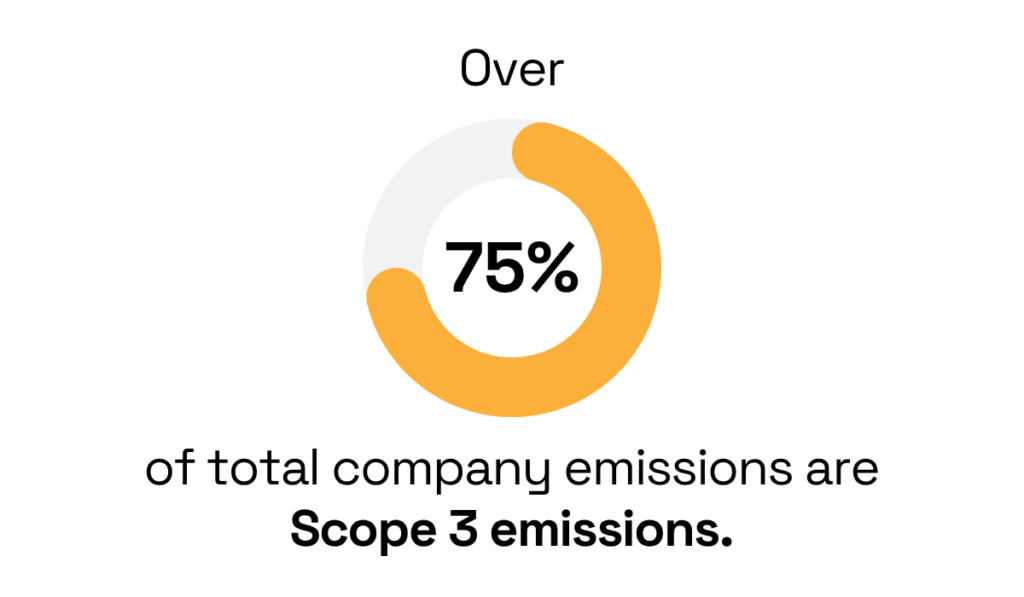
Illustration: Veridion / Data: CDP
Reducing supplier-related emissions, however, is more challenging than reducing those under your direct control.
It’s especially difficult if you’re trying to get suppliers to change their practices.
The best thing you can do is favor low-carbon suppliers and embed climate criteria in contracts from the start.
If you haven’t done this already, you can still amend existing contracts or develop new policies, like a supplier code of conduct.
This may be the more difficult option, though, as you might encounter pushback from suppliers or even legal restrictions.
Still, if you can get suppliers on board, progress is possible.
You can find sample climate clauses online and work your way from there.

Source: The Chancery Lane Project
After laying the groundwork, you can implement other tactics that will help you reach net-zero or science-based targets.
For example, consider integrating lifecycle impact assessments into your procurement workflows and creating programs that encourage greener production practices.
Programs that offer recognition or incentives, such as preferred supplier status, can go a long way. For best results, combine them with educational programs that help suppliers improve their practices.
As mentioned, the ‘S’ in ESG is rising in popularity.
That’s why environmental initiatives need to be coupled with social ones, with diversity and inclusion at the core.
However, at the moment, neither consumers nor business leaders are happy with organizational D&I initiatives.
The aforementioned PwC survey uncovered that 73% of consumers are disappointed with the progress of D&I, with 64% of business leaders sharing the sentiment.
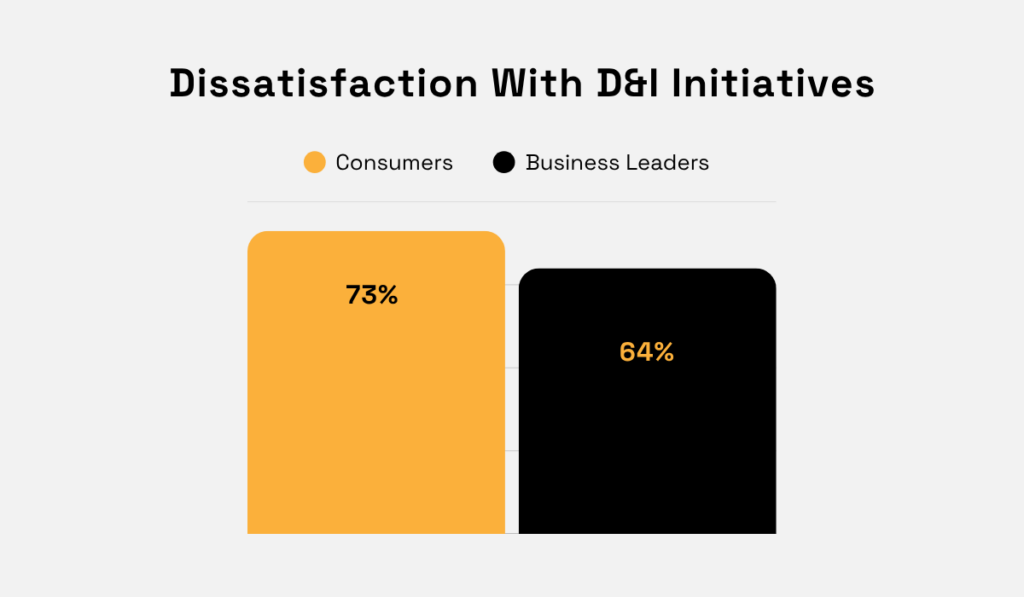
Illustration: Veridion / Data: PwC
This finding doesn’t just show disappointment.
It also proves that consumers and business leaders care about D&I commitments, and want to see them come to fruition.
Consequently, many are increasingly scrutinizing how companies support minority- and women-owned businesses, inclusive hiring practices, and supplier diversity.
For example, McKinsey’s 2021 survey showed that 45% of consumers want clear “Black-owned” labels on store shelves and “Black-owned” filters on websites.
McKinsey estimates that this percentage translates to roughly over a hundred million buyers.
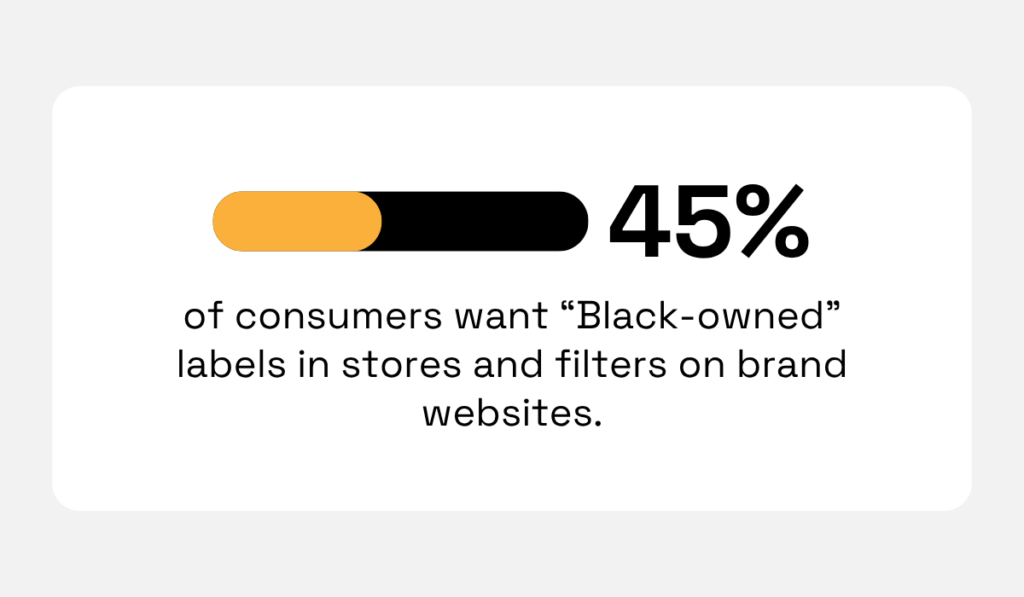
Illustration: Veridion / Data: McKinsey
Procurement can help drive D&I by intentionally sourcing from underrepresented suppliers and tracking internal equity practices.
To approach this in a strategic manner, teams should consider building an official supplier diversity program.
While this may seem like a far-fetched goal for SMEs, strategic commitment is key to earning public trust and driving better business outcomes.
Julie Kratz, a professor at the Indiana University Kelley School of Business, emphasizes that supplier diversity also helps strengthen customer relationships and build a competitive edge.
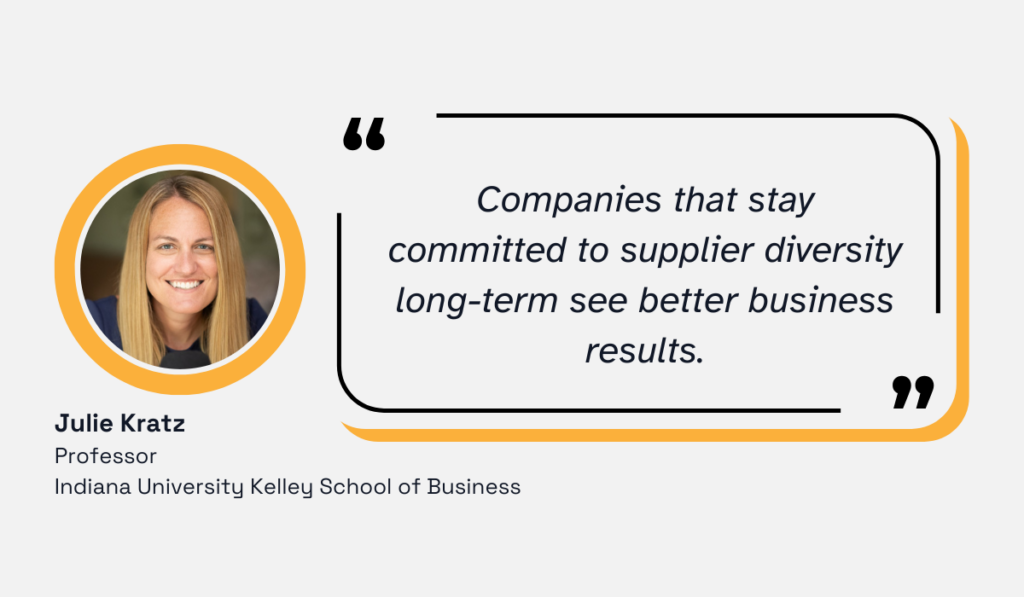
Illustration: Veridion / Quote: Forbes
Building a supplier diversity program, of course, starts with securing buy-in.
Leadership will be more keen to support your initiative if you can demonstrate how it aligns with broader business objectives.
Focusing on the key points above, i.e., linking D&I to innovation, resilience, and trust, should help.
You can then move on to establishing a baseline and setting KPIs, like the total number of new diverse suppliers.
To put the plan into action, create new diversity policies and set clear criteria for supplier diversity assessments.
All that’s left to do is measure your progress and refine your approach as you go.
Consumers’ expectations around ESG are rising, but it’s still possible to meet them. The key lies in having a strategic plan that’s thoughtful, realistic, and built into your existing workflows.
Every important step, including staying on top of ESG trends, deserves careful consideration. These efforts are what help you move from reactive to proactive.
And remember that ESG stands on three pillars: environmental, social, and governance. A strong approach takes all three into account.
With the right mindset, structure, and tools, you won’t just meet expectations. You’ll exceed them, and earn lasting trust in the process.